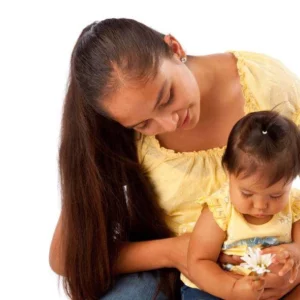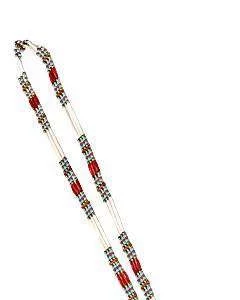Powwow Trail is a glimpse inside the Oneida Powwow through the eyes of Dylan Jennings, a UW-Madison student, traditional dancer, and singer with Midnite Express. This is the fourth installment of The Ways, a collection of stories about Native culture and language from Wisconsin Media Lab.
The Ways is an ongoing series of stories on culture and language from native communities around the Central Great Lakes. The series is produced by Wisconsin Media Lab as a resource for 6-12 grade students. Below are the videos and stories released so far.
Pow Wow Trail
Contemporary powwows bring together Native Americans from many different Nations and provide communities a chance to gather and celebrate. Each of the eleven federally recognized American Indian Nations in Wisconsin, including the Oneida Nation, hosts powwows. At a Traditional Powwow, a family might honor the return of a lost relative. Elders might present an eagle feather to a youth for her accomplishments in school. Vendors sell shirts, beads, books, hats, and other goods. Drum groups honor veterans through songs. Feasts provide a chance to connect with relatives in an informal setting over traditional foods, and spectators can be immersed in Native American cultures. A Contest Powwow includes many similar elements to a Traditional with one key difference, drums and dancers compete for prize money. Dancers at the Oneida Veterans Pow Wow featured in this story compete in Fancy, Grass, Jingle, Smoke, and Traditional dance.
Read more of the Pow Wow Trail story.
Lake Superior Whitefish
The Petersons are part of a long tradition of commercial fishing among Lake Superior tribes. Avid fishermen for subsistence prior to European settlement, the Lake Superior Chippewa quickly found Gichigami’s (Ojibwe word for Lake Superior) fish to be a valued trade item once explorers penetrated to this inland sea. Tribal fishermen traded fish harvested from birch bark canoes, using gill nets made from twisted and knotted strips of willow bark.
Read more of the Lake Superior Whitefish story.
Prayers in a Song
In “Prayers in a Song” Minneapolis based hip hop artist Tall Paul (Paul Wenell Jr.) raps about his struggle to learn his indigenous language, Anishinaabemowin, and his journey toward a deeper understanding of his Native identity. Speaking of the harsh realities of growing up in a poor urban landscape, Tall Paul raps in both English and Anishinaabemowin.
Read more of the Prayers in a Song story.
Living Language
Before European contact, the Menominee Indian Tribe had a land base of over 10 million acres (in what is now known as Wisconsin and parts of Michigan) and over 2,000 people spoke their language. Today, their land has been reduced to 235,000 acres, due to a series of treaties that eroded the tribe’s land base, while policies like relocation and removal, and boarding schools where children were punished for speaking their native languages, caused the language to almost disappear. Today there are fewer than ten first language speakers and fewer than 20 fluent speakers of Menominee.
Read more of the Living Language Story.
Language Apprentice
Members of the Ho-Chunk Nation work hard to sustain their culture and beliefs. They believe it is essential to keep their traditional knowledge alive by passing on their culture and language from elders to younger generations. In their continued efforts to maintain their traditional knowledge, the Ho-Chunk Nation created the Hoocak Waaziija Haci Language Division, an entire branch of government devoted to preserving the Ho-Chunk Language as a “Living Language.”
Read more of the Language Apprentice Story.
Hunting Deer
Greg “Biskakone” Johnson is a member of the Lynx Clan and an enrolled member of the Lac du Flambeau Band of Lake Superior Chippewa. His home on the Lac du Flambeau reservation established by the Treaty of 1854 is also known as Waaswaaganing, “the place of the torch.” Greg lives his life according to the four seasons, as did his ancestors. He harvests deer, fish, maple sugar, berries, wild rice, and wild plants. He enjoys trapping and snaring as well as hunting with a gun. Greg is passionate about keeping the traditional ways alive, and he takes every opportunity to teach these ways to others. Whether he is taking a group of students spearing for the first time or showing community members how to make buckskin moccasins, he shares his knowledge in the hope of keeping a vibrant traditional way of life relevant today. Greg’s favorite students are his two children, Wasanodae and Koen. Greg taught his daughter how to skin a deer when she was four and his son to make moccasins at age five. Together, the kids tracked their first deer before they turned six.
Read more of the Hunting Deer Story.
Clan Mother
Molly Miller, whose Munsee name is Wasalaangweew (Bright Star), is a clan mother among the Stockbridge-Munsee Band of Mohican Indians. Historically, clan mothers were decision makers in the community. They represented the will of the people in selecting chiefs and other important decisions. As a clan mother and member of the Language and Culture Committee, today, Molly works to revitalize the Mohican language, culture, and community. Mohican language is taught in the Bowler School District two days a week, which is where the majority of the students from the community attend school. The tribe also holds language classes at the Mohican Family Center on the reservation.
Read more of the Clan Mother Story.
Lady Thunderhawks
Jessica House began her basketball career at the age of eight. Her mother and other parents of home-school students began a physical education class that quickly turned into a full-blown basketball program. Jessica was too young to play, but loved to practice with the team. When she witnessed her older cousin Maria score the 1000th point of her high school basketball career at Oneida Nation High School in 2004, Jessica vowed that she too would become a Lady Thunderhawk and score 1000 career points.
Read more about the Lady Thunderhawks.
Last Updated on January 15, 2024 by Paul G





Göran Ramme
says:Interesting history to read, photo´s and video´s. I have been interested of the native people since I was a young boy. I live in the north of Sweden and we have the Sámi people.
I was born close to the artic circle in the north of Sweden.
I have relatives in British Colombia, Prince Georg with the name Bjorklund.
My English is not good but hope it´s ok and I have so much to say in this matter.
Greetings Göran Ramme.